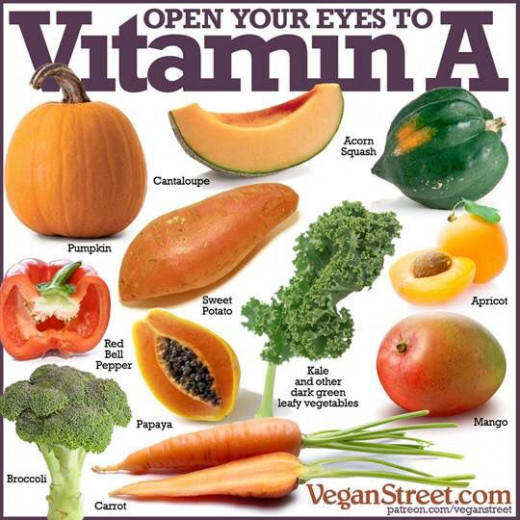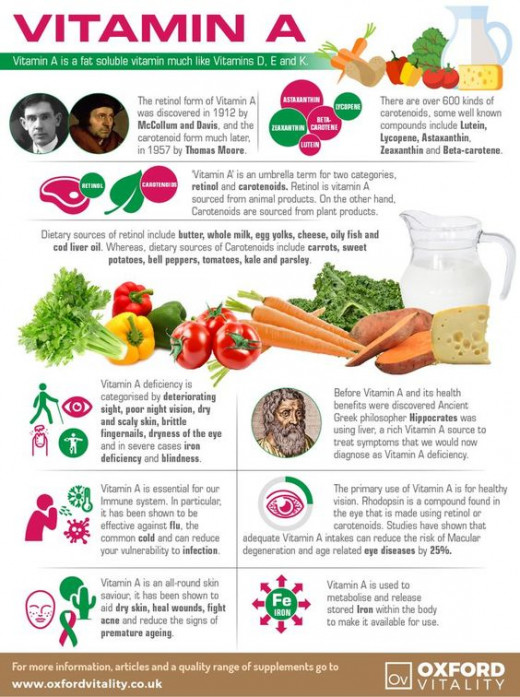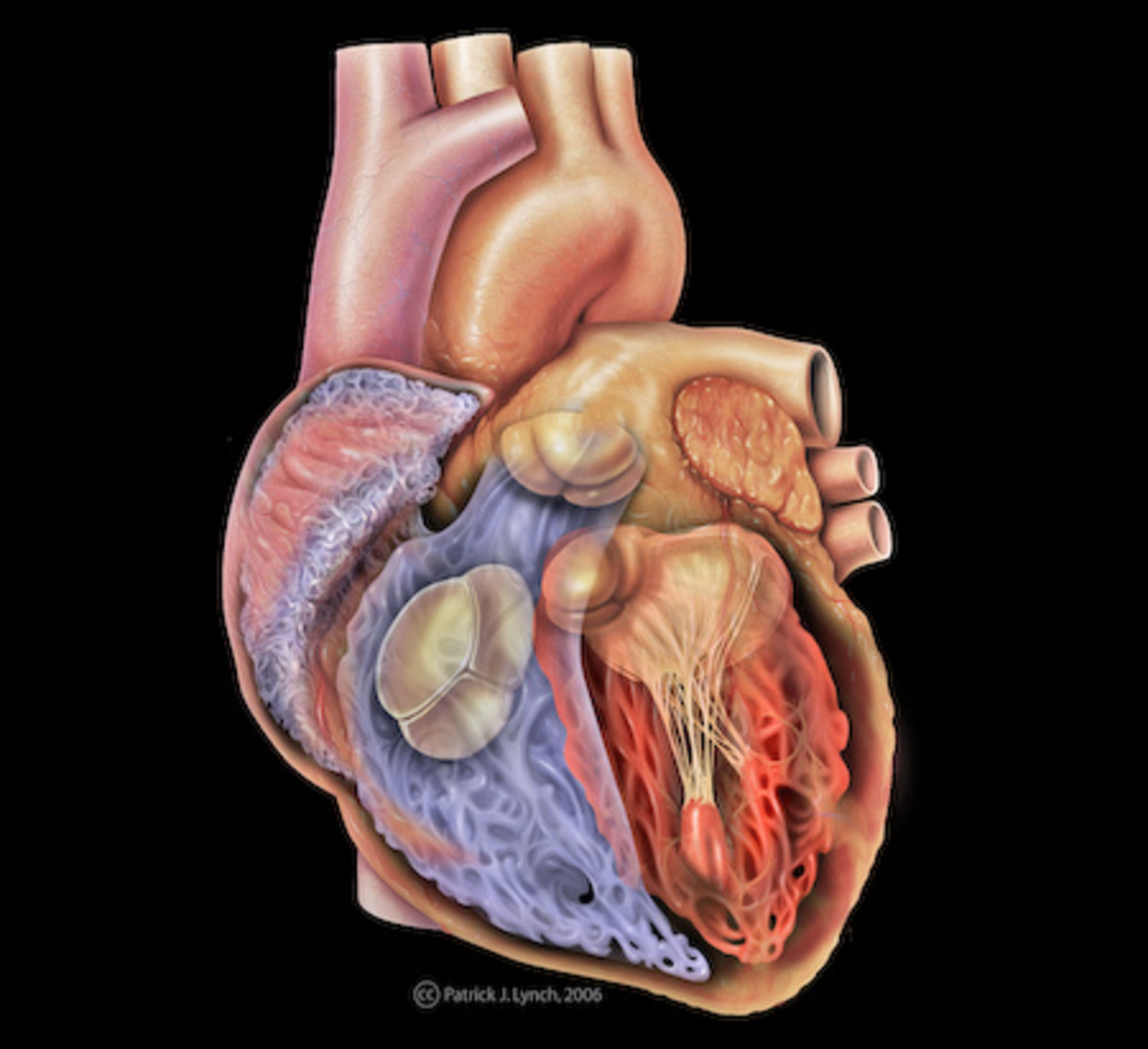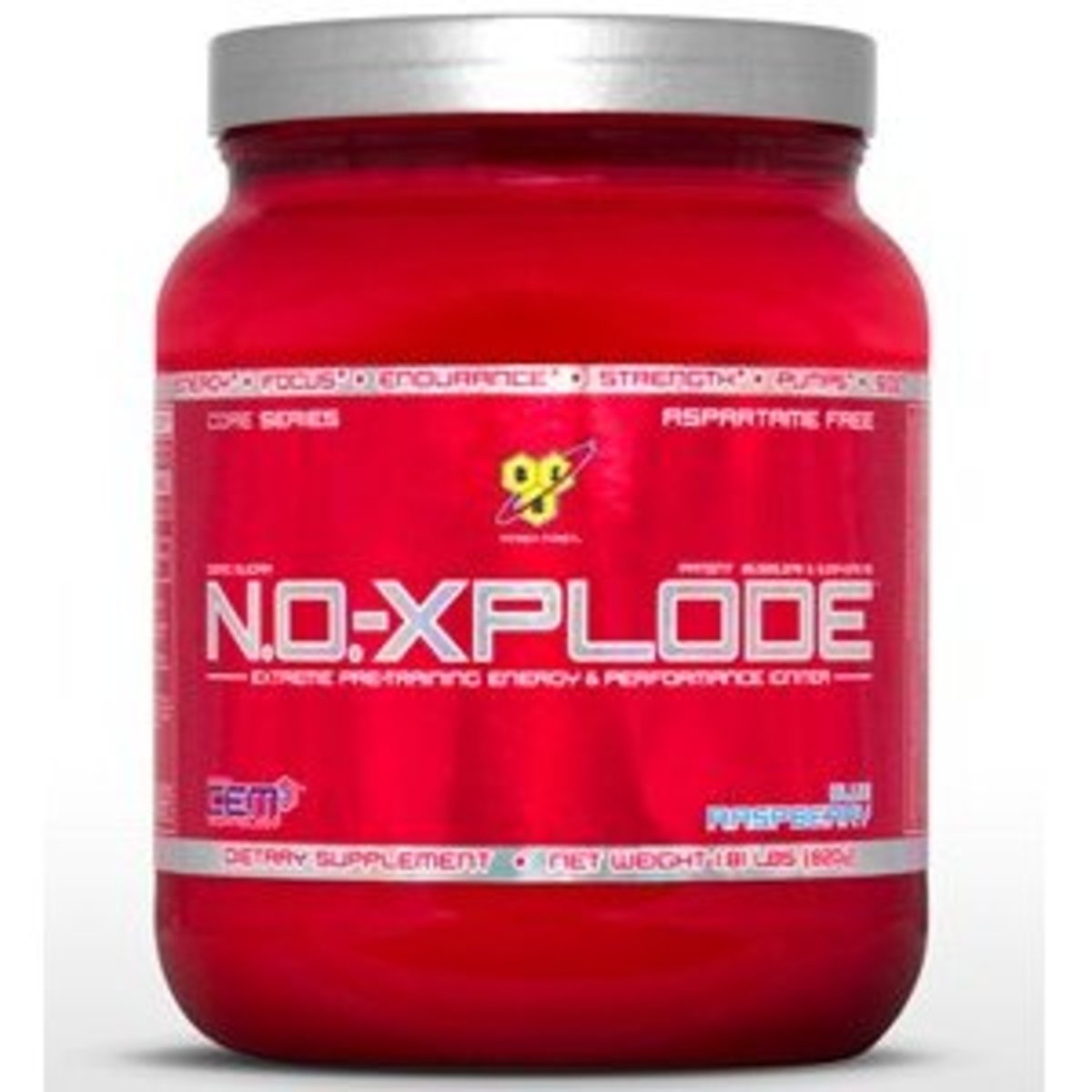History, Classification, Advantage, Disadvantage and sources of Vitamin A



About Vitamin A
Vitamins and their history
Vitamins: - Organic compound
Vitamins are distinct from major components of food required in diet is small amount to perform specific biological fxn for normal maintenance of optimum growth and health whose absence cause specific deficiency dzs. E.coli is only organism which synthesizes all vitamins themselves. It is believed that during course of evolution the ability to synthesize vitamins was lost hence higher organism receiving it from their diet in small quantities because its degradation is relatively slow.
Vitamins are generally characterized into two groups:-
- Fat soluble
- Water soluble
General characteristics of vitamins
- Plants synthesizes all vitamins while few are synthesizes by animals
- All the cells of the body store vitamins to some extent.
- Vitamins when taken orally are effective.
- Vitamins are partly destroyed and are partly excreted.
- Vitamins are non antigenic.
- Human body can synthesize some vitamins.
- Synthetically-made vitamins are just as nutritionally good as natural vitamins.
Classification of Vitamins
There are about 15 vitamins. Essential for humans they are classified as fat soluble (A, D, E, and K) and water soluble(c and B-group). The B-complex vitamins may be sub-divided into energy-releasing (B1, B2, B6, biotin etc.) and hematopoietic (folic acid and B12) Vitamins as per definition, are not synthesized in body. However bacteria of 9 us can produce some of vitamins required by man and animals. Some of the animals (e.g. rat, deer, etc.) eat their own feces. A phenomenon kolas coprophage. Fat Soluble Vitamins can be stored in liver and adipose tissue. They are not readily excreted in urine. Excess consumption of these vitamins (Particularly A and D) leads to their accumulation and toxic effect. Water soluble vitamins are not stored in body in large quantities (except B12).
Vitamin A
History: - It was 1st recognized as essential nutrient factor by Elmer McCollum in 193 and then isolated from fish-lives oil by Holmes in 1917. Though its history was recorded way back in 500 BC when Hippocrates cured night blindness by prescribing patients ox liver (in honey) which is now known to have high quantity of vitamin A. It was 1st synthesized in 1947 by Miles.
- Liver oils of various fishes are richest natural sources of vitamin A.
- Polar bear contains extremely concn source of vitamin A.
- Other source is butter, milk and egg and less extent kidney.
Chemistry: - In recent years, the term vitamin A is collectively used to represent many structurally related and biologically active molecules. The term retinoid is often used to include the natural and synthetic form of vitamin Retino, retinal and retinoic acid is regarded as vitamin of vitamin A.
Retino (Vitamin A alcohol): It is primary alcohol containing B-inne ring containing two isoprenoid units in side chain-retino) is present in animal tissues as retinal ester with long chain fatty acids.
Retina (Vitamin A Oldehyde):- It is aldehyde form obtained by oxidation of Retinol. Retinal and rerinol is interring convertible.
Retinoic acid (Vitamin A acid):- It is produced by Oxidation of Retinal without reverse.
B Carotene (Pro vitamin A) it is found in plant foods. It is cleaved in intestine to produce two moles of retinal. B carotene possesses about one-sixth vitamin A activity compared to that of retinol.
Vitamin A deficiently: - The deficiency systems of vitamin A are not immediate, since the hepatic stores can meet the body requirement for quite some time (2-4) Months.
Exophthalmia or xerosis: - It is major cause of blindness in childhood and few in adult. It is characterized by drying of eyes. Lachrymal gland is keratinized and ceases to produce tears. This makes external surface dry and dull ulcers develops and bacteria aren’t flushed which leads to swelling and sickness or eyelid. Causing exudation or blood causing infection of eye which when hot traded cause blindness.
Keratomalcia: - It is corneal dzs occurring maxmto pre-school children. Maximum to those suffering from kwashiorkor ESP after an episode of diarrhea or infection
Phrynoderma: it is skin lesion and is characterized by follicular hyperkeratosis.Other than this vitamin a deficiency also cause growth retardation, sterility in males, drying of skin formation of urinary stones, hair loss
Hypervitamosis A: - Excessive consumption of vitamin A leads to toxicity. Symptoms being dermatitis, enlargement of liver, skeletal decalcification tenderness of long bone, loss of wt, hair irritability joints pains etc
Vitamins level is elevated in vitamin A toxicity. Free rational and retinol bound to plasma lipoprotein is actually harmful to the body. It is believed that toxicity occurs when retinol binding capacity of retinol binding protein exceeds.







